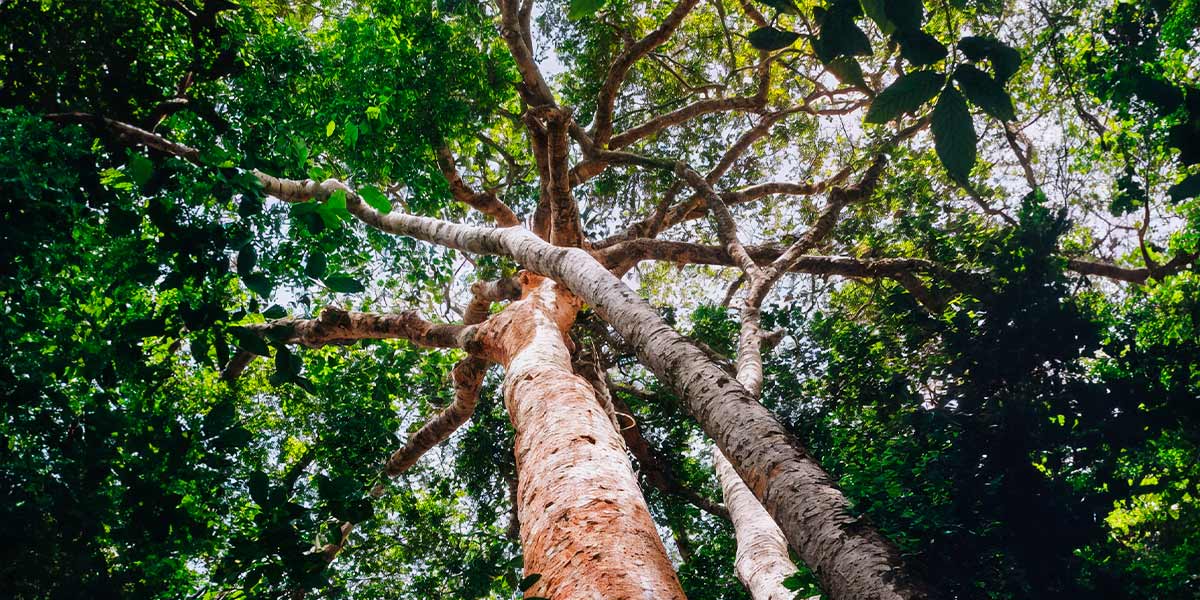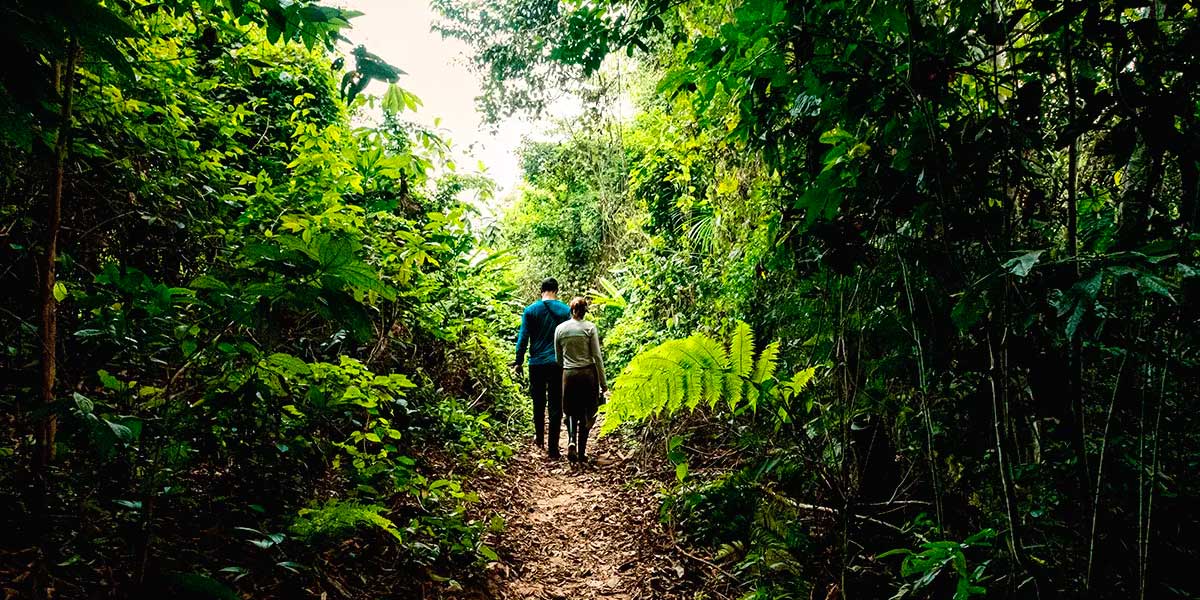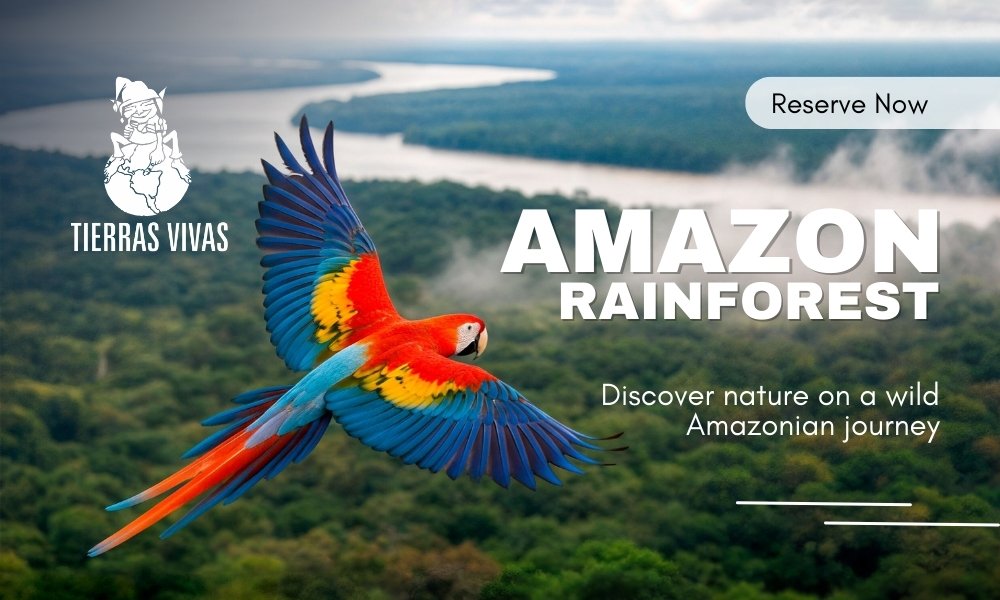Peru is home to about 25,000 species of native plants, which is equal to 10% of all plant species in the world. Some of the most representative native trees of Perú are the macua, the quenua, the quina, the paico, the cat's claw, or the cherimoya.
This richness is due to the great geographic diversity of Peru: coastal deserts, highlands and jungles. In addition, it has 28 climates of the 32 possible on the planet and 84 of the 103 existing ecological zones, which makes Peruvian flora one of the most diverse in the world.
Origin and adaptation
Peruvian native trees are known as those species native to the territory, which arose naturally even before human presence. These plants are better adapted to the local climate, soil, and ecosystems. Many of them have also developed resistance to common pests of the region.
Historical and cultural use
Since ancient times, the properties of native Peruvian trees were recognized for their food and medicinal value. Some species were already cultivated in the year 1600 B.C. by indigenous populations.
The Incas considered several of these plants as "a gift from the gods", using them in religious ceremonies, rituals, and as an essential food source for their communities.
Export of native trees from the Peruvian Andes
In 2009, Peru exported a wide variety of native trees from the Peruvian Andes, including: camu camu, maca, cat's claw, tara, quinoa, sacha inchi, achiote, aguaymanto, walnut, purple corn, Cusco giant corn, kiwicha, and yacon, with a value close to 87 million dollars.
Currently, cedar, mahogany, and shihuahuaco are the most demanded species internationally, with the main markets being the United States, Mexico, China, and some European countries.
Most demanded trees in Peru
Among the trees most required for trade and export are:
- Shihuahuaco
- Mahogany
- Cedar
It is estimated that for every mahogany there are six cedars, and for every cedar there are ten shihuahuacos, which reflects the abundance and importance of these species within Peruvian biodiversity.
Observation in nature
Walking through the Peruvian jungle is a unique experience, as there, with the help of a guide, it is possible to observe imposing trees with giant canopies that seem to hold up the sky, in addition to hearing birds, insects, and fish in the rivers and lagoons.
According to Alfredo Biasevich, a representative of Forestal Otorongo, there are more than 3,000 different species of trees in Peru, all growing mixed in the forest. Of these, only about 25 to 30 have commercial value, and only 8 are exported.
How long does it take for trees in Perú to be removable?
In Peru, a timber tree can take an average of 30 years to reach a usable size. However, the process is not the same for all species, as some require several more decades to reach their full development.
As for the measurements, the minimum legal cutting diameter for shihuahuaco is 51 cm, but companies like Forestal Otorongo apply a stricter standard, felling only specimens with a 70 cm diameter, which ensures greater sustainability. In other species, the legal minimum is different: 75 cm for mahogany and 61 cm for tornillo.
Of the total of a felled tree, an average of 70% of the wood is used; although in some cases, such as with tornillo, only 55% is used, since before cutting it, integrity tests are carried out to ensure the quality of the wood.
It is important to highlight that timber extraction in Peru is carried out only in areas authorized by the State, while protected natural areas and forest reserves remain untouched. This guarantees that the forests continue to fulfill their vital function: to maintain the water supply, even in times of drought, thanks to the plant cover that feeds the streams and protects the Amazonian ecosystems.
Native Trees of Peruvian Andes
-
Queuna
It is a small native tree of Peruvian Andes. Its leaves are small, its trunk is crooked and its bark is reddish. It is peeled like paper and is known as "the tourist tree". -
Cinchona
It is a native tree of Peruvian Andes of about 10 meters, native to the Andes, being well known for being present on the coat of arms of the Peruvian national flag. Its bark contains quinine and is used to treat malaria. -
Puya Raimondi
It is a wild species endemic to the Andes. It reaches 12 meters in height and produces up to 8,000 flowers throughout its life, which can last up to 100 years.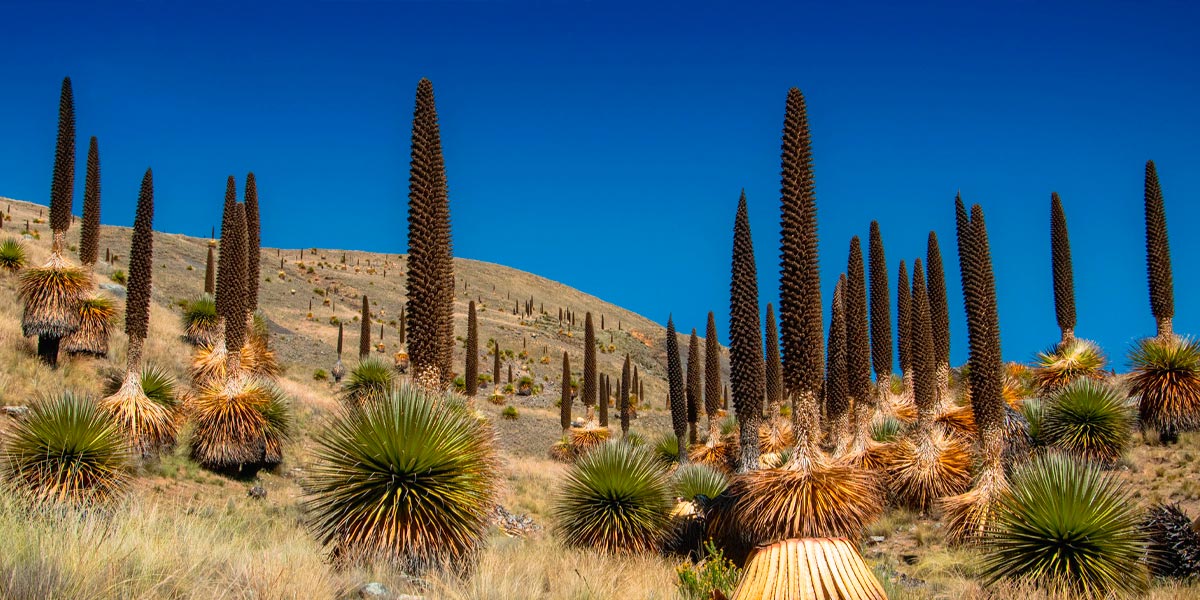
-
Huarango
It reaches 10 m in height, extremely long roots has the deepest roots in the world, they can measure up to 70 meters by bringing water to the surface makes life possible for other plants as well.
It has long yellowish green flowers.
The fruit of the tree, called huaranga, is highly nutritious. Whaley notes that "pre-Columbian cultures survived during periods of drought by eating only this fruit."
The bark is used to tan leather. The resin from its trunk is used for dyeing. The seeds are food for livestock, and the flowers are attractive to bees. The leaves that fall to the ground are used as organic fertilizer and receive the name of "poña, fist, mulch, litter". -
Ceibo
Also known as ‘Palo Borracho’ or ‘Lupuna’. The Ceibo belongs to the Bombáceas family and is the largest species in the city.
It is a very long-lived tree that reaches 25 meters in height. Its trunk reaches 2 meters in diameter, presenting stingers and a bottle shape. Its seeds are contained in hanging capsules filled with cotton, which is used by birds for their nests and by man to make cushions.
It requires spaces such as parks or berms in avenues for its healthy development. -
Molle Serrano
Also known as Peruvian pepper, it belongs to the Anacardáceas family and is a tree native to the Andes of Peru, Ecuador and Bolivia.
It is a long-lived tree of approximate height between 4 and 8 meters, with a green and globular crown, sinuous trunk and semi-deep root.
It is a highly recommended species for the city of Lima, since it has a rapid growth, requires undemanding soil and direct light. Its propagation is through seeds, it is resistant to diseases and does not require abundant irrigation. It is a very versatile tree and is used for parks, berms and gardens.
-
Elder
It is a member of the family of the Caprifoleáceas. It is a small tree, not more than 5 meters high. Features compound sheets with serrated edges. It is characterized because throughout the year it presents small and numerous white flowers, which are found gathered at the end of the branches.
On the Peruvian coast it does not bear fruit as in the Andes, but it blooms very well, becoming an ornamental tree. -
Tara
Height: youth, 2-5 m tall, but which can measure up to 12 m in old age.
Its flowers are reddish yellow arranged in clusters from 8 cm to 15 cm long. It blooms from January to March.
Its fruits are esplanade and indehiscent orange pods of 8 cm to 10 cm long and approximately 2 cm wide, containing from 4 to 7 rounded seed grains from 0.6 cm to 0.7 cm in diameter and are blackish brown when they are ripe.
Each TARA tree can yield an average of 20 Kg to 40 Kg of pod harvesting twice a year. Generally a TARA tree bears fruit at three years, and if it is wild at four years. The production cycle is prolonged in irrigated land, reaching an average of up to 85 years. It begins to produce prematurely at 4, reaches its highest production after 15 years and begins to decrease at 65 and is practically unproductive at 85 years. Its average life span is one hundred years and the area occupied by each tree is 10 square meters.
It is used as a medicinal plant, since the infusion prepared with its leaves would counteract diabetes, reduce cough and act as a diuretic (Font Quer, 1982). Its fruit rich in tannins plus its seeds rich in hydrocolioids make this legume highly appreciated by tanneries and food companies that require thickeners. -
Huaranhuay
These native trees of Peruvian Andes can exceed seven meters in height, their limited root growth does not produce raising of tracks and sidewalks.
The intense yellow flowers grouped in clusters appear at the tips of the branches and attract butterflies, hummingbirds and other types of birds. In addition, they have a pleasant fragrance. To ensure continued flowering, pruning should be done before spring.
It is used for conjunctivitis and headaches. In its chemistry it reports Tecomina, cytosterol, alkanes, rutin, quercitina and luteolina (Jhonston, 1979). The infusion in cold water of the tender leaves is used to treat liver, kidney and gallbladder problems, as well as stomach pain.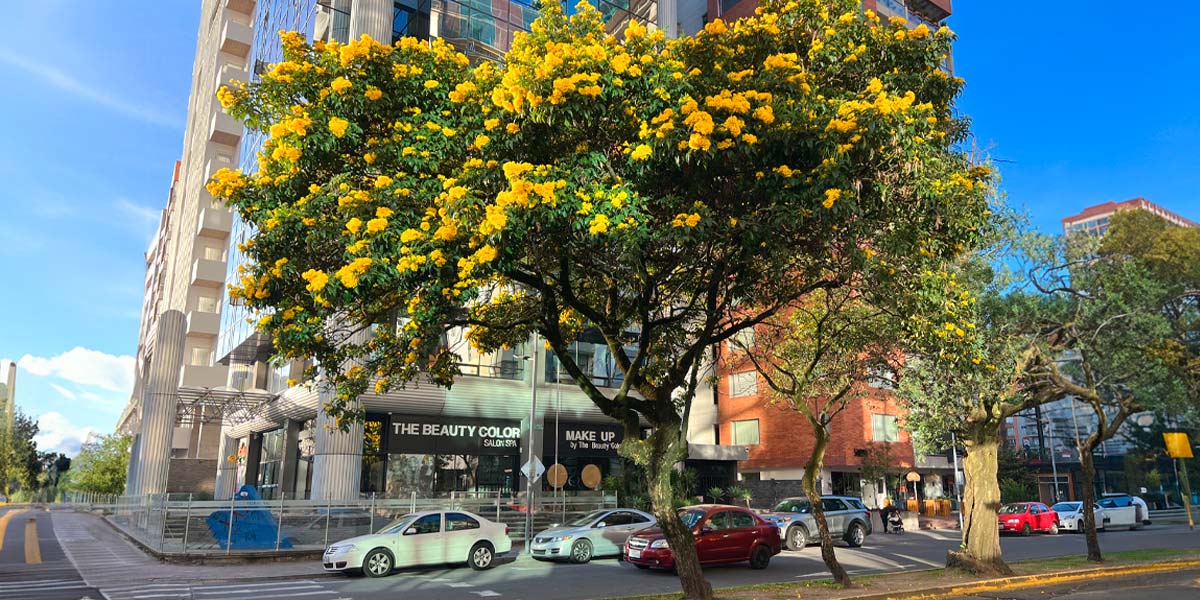
-
Boliche
The flower groups are lateral panicles, 15-45 cm long with numerous small whitish flowers, producing small sticky brown fruits that foam on contact with water.
Propagation can be done by seed. As a pre-germination treatment, the seeds are immersed in cold water for a week, changing the water day by day.
If you suffer from hair loss, dandruff, seborrhea or psoriasis, you can use Peru Natural's bowling shampoo and medicinal plants daily. Leave the foam on the hair for five minutes and after rinsing apply sanky lotion, aloe and placenta, and comb. With these recommendations from the first week the hair loss will stop and with the course of the first three months it will grow again. -
Forage acacia
Shrubs 2 - 3 meters / Trees 10 meters according to management. The primary root penetrates into the deep layers of the soil and uses the water and minerals below the area where the roots of many agricultural plants reach.
The fruit is a straight, flattened, leathery, brown legume with an attenuated base, with a pubescent pedicel of about 3 cm, with a beak and is 10-20 cm long by 1.5-4 cm wide. It has dehiscence due to the 2 longitudinal sutures.
Protein bank, firewood, cut and carry, green manure, agroforestry systems, concentrate for poultry, pigs and cattle, grazing, live barriers, windbreaks, silage The fruits are highly appreciated for their high content of vitamin A and protein (46%). Ripe seeds are used as coffee substitutes.
Treks to see native trees in Perú
Peru offers ideal hiking trails to discover the diversity of its native trees, from the cloud forests of Cusco and Amazonas, where species like the queuña and Andean cedar live, to the Peruvian Amazon, home to giants like the shihuahuaco and mahogany. These treks not only allow you to enjoy stunning landscapes but also to learn about the ecological importance of each species and its role in the conservation of ecosystems. Learn about the treks in Peru that allow you to appreciate these trees:

